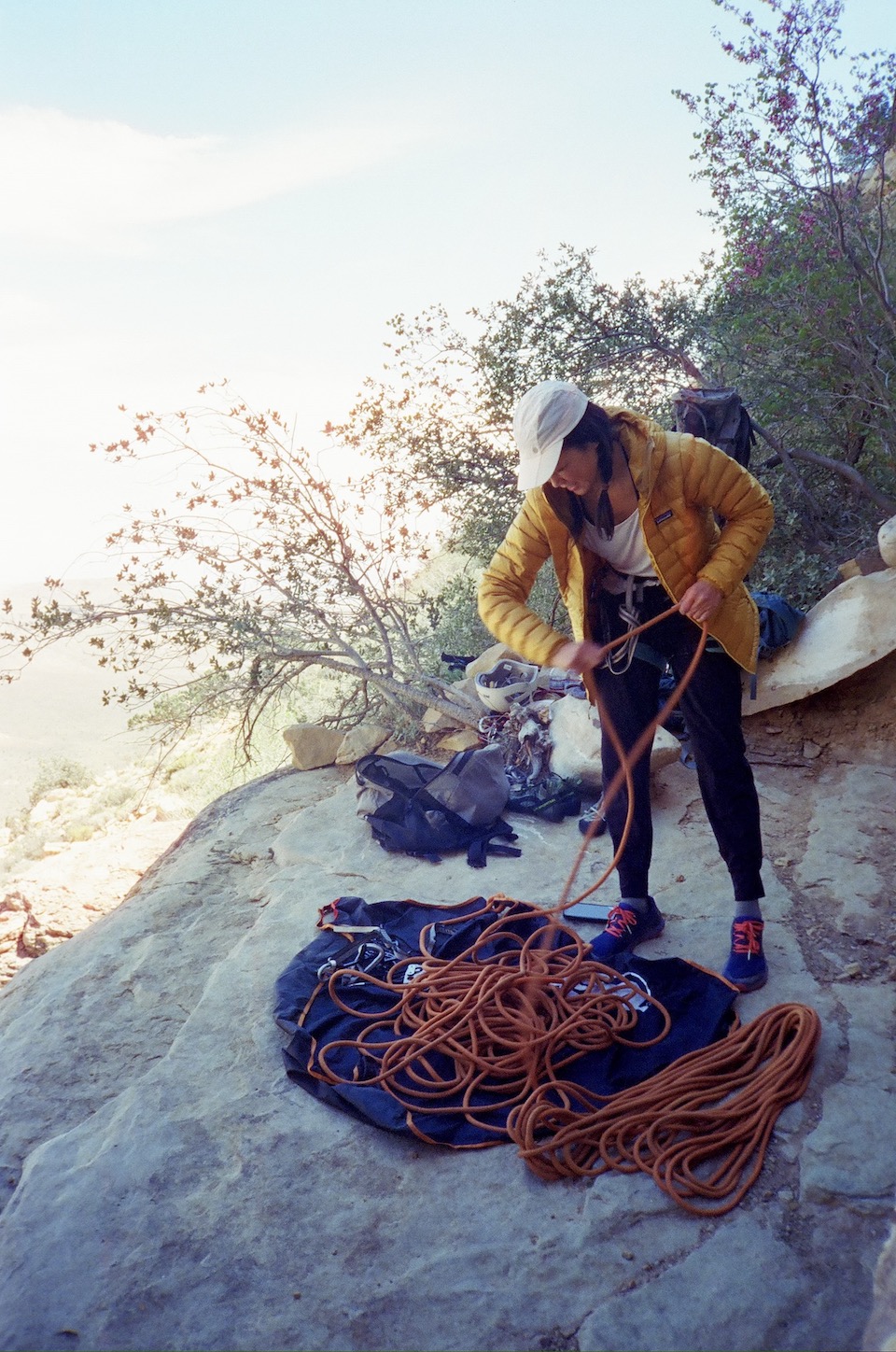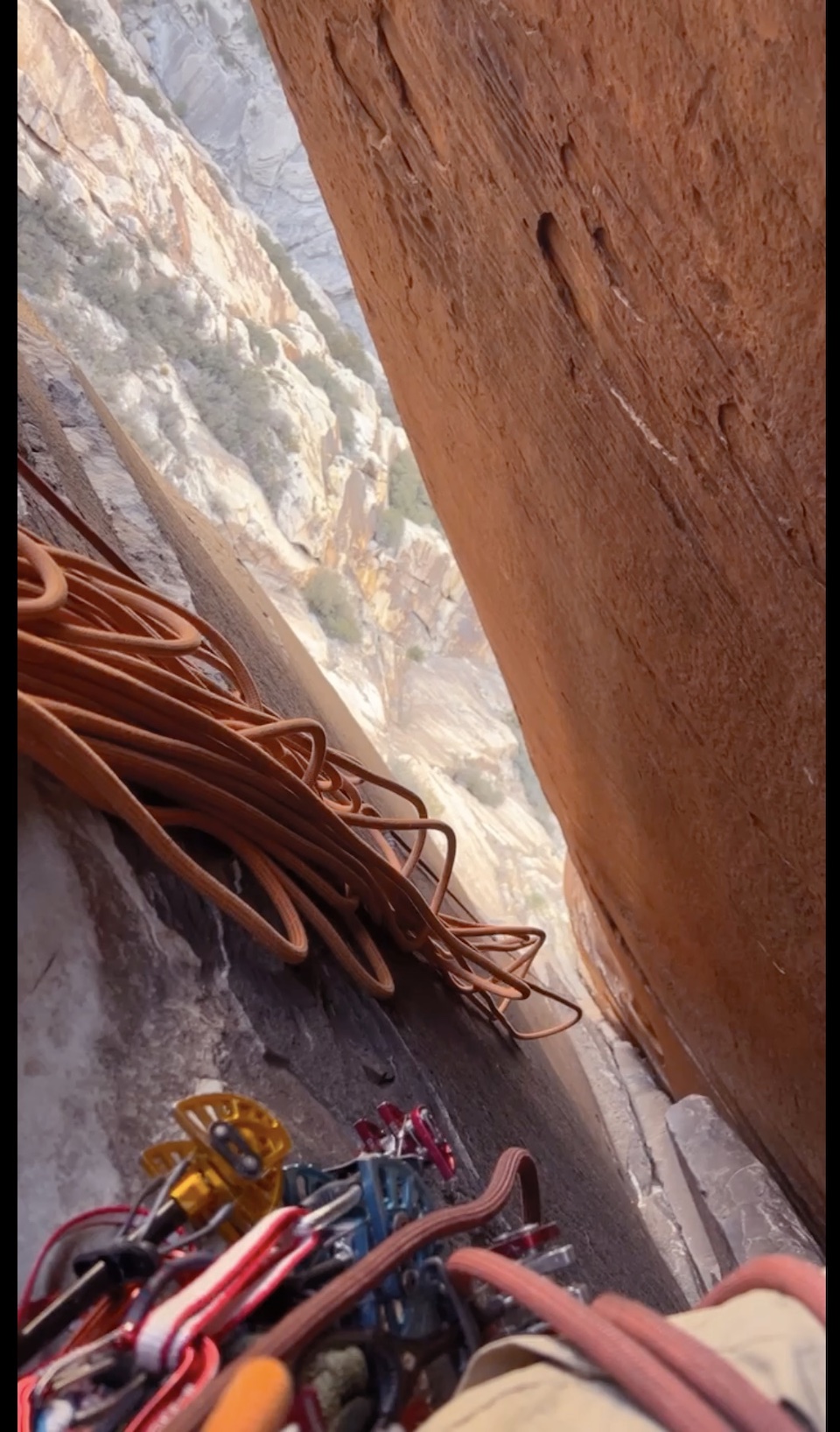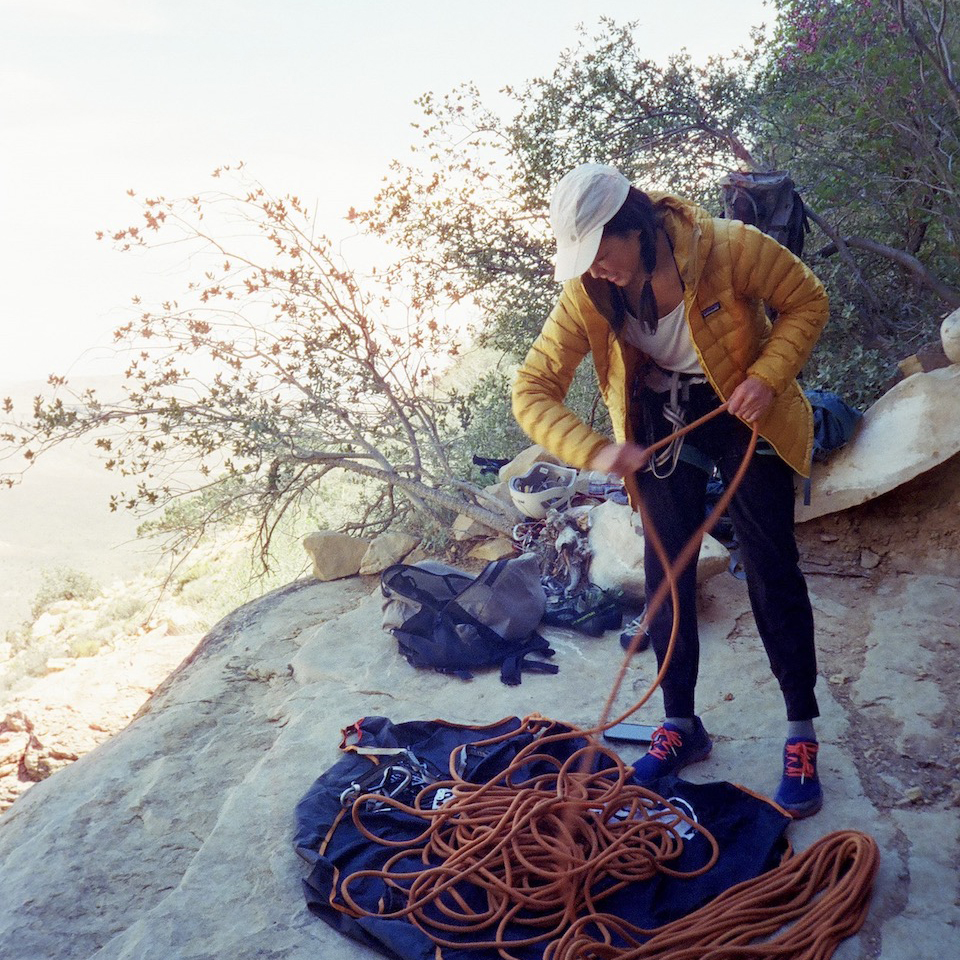Finding a climbing partner is as easy as swiping on Tinder these days.
OK, so it’s not exactly Tinder, but I imagine sifting through profiles on Mountain Project or Facebook is what a dating app feels like.
After my daughter was born, I had much less time for climbing, but over the last few years, climbing has once again become a bigger part of my life. My daughter developed an intense interest in climbing and that was the impetus to get back into it. Then, through a friend, I was invited to a climbing trip in Red Rock Canyon, Nevada. I joined a group of about 20 strangers, ranging in ages from their mid-20s to mid-50s. I’m 47, and I hadn’t been on a real climbing trip since I was in my 20s. I didn’t know anyone, but we used a group chat to connect.

Now, technology makes finding a climbing partner more instantaneous. One day you’re connecting online, and the next you’re climbing with a new partner. What you lose in familiarity, you gain in accessibility, but keep in mind, convenience can come at a tradeoff.
When I started in this sport, having a climbing partner was like being in a monogamous relationship. You found a partner and stayed with them for years. This brought comfort and security. You and your partner knew each other inside and out, and I knew my belayer had me in any fall.
I learned the hard way, after all. I begged experienced climbers to teach me and to take me on climbs. I had to climb harder and smarter so that I wasn’t passed up for a better climber. But on this trip, a lot of the climbers had taken classes and learned from guides. They never had to beg and accommodate. They had condensed years of my experience into a handful of weekends. They learned multiple techniques in a matter of days, whereas I gradually accumulated them over hundreds of climbs.

The way things are done now often freak me out! For example, there’s this major shift in the use of belay devices. In roped climbing, there’s a climber and a belayer, who stands on the ground, takes in and feeds out rope. The belayer secures the rope with help of a special device that creates friction. I used a belaying device called an ATC. Now, almost all belayers prefer a device called a GriGri, a self-locking assisted braking device. It is a great concept, but the device creates difficulty in feeding out rope to a lead climber. In turn, the belayer needs to override the device to pay out rope as needed. This move compromises the safety mechanism but also creates a habit that can result in overriding the safety at the wrong time.
Continue reading this blog post, written by Vera Koo’s daughter, Shane, at Women’s Outdoor News.


